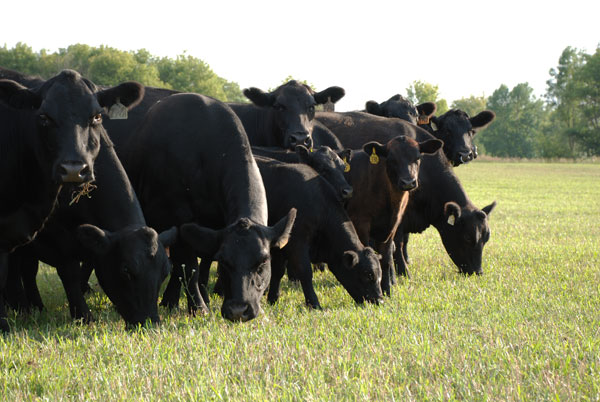Will the cowherd continue to grow? You can debate both sides, but it's likely it will keep getting larger.
October 30, 2017

Depending on how well-greased your abacus is, there seems little question that the nation’s beef cowherd continued to expand this year.
“The beef herd expansion we’ve seen from 2014 to 2017 has been the most aggressive three-year start to any expansion on record,” says Trevor Amen, animal protein economist at CoBank. “Recent slaughter numbers and the cattle on feed mix indicate the expansion rate is slowing, but barring any significant export market disruptions or weather events, expansion will continue through the end of the decade.”
Likewise, in its recent U.S. Long-term Beef and Cattle Outlook, Rabobank analysts see the beef cowherd growing another 1.6% to 2.2% over the next two to three years.
There were 31.2 million beef cows at the beginning of this year, according to the January Cattle report from USDA. That was 3% more cows than at the beginning of 2016.
Along the way, beef production will increase beyond herd expansion. The October World Agricultural Supply and Demand Estimates forecast beef production for this year at 26.55 million pounds. Those same estimates project a little over 1 billion pounds of total red meat and poultry production this year.
Besides ultimate growth and timing, the rate of continued consolidation and concentration in the cow-calf sector remains to be determined. To my knowledge, the Census of Agriculture (Census) conducted every five years provides the most accurate barometer of beef cow ownership by herd size.
Comparing between the 2012 Census and the one before it in 2007, there were 4.9% fewer operations (727,906) with beef cows. Those operations had 11.8% fewer beef cows (28.96 million head) than in 2007.
Of course, lots happened between the two reads, including parts of the commodity price bubble, the Great Recession and prolonged, widespread drought forcing herd liquidation.
According to the last Census, 81.64% of all beef cow operations had 49 or fewer beef cows and accounted for 29.79% of the cows. On the other end of the scale, 3.58% of all beef cow operations had 200 or more cows and accounted for 37.23% of all beef cows.
Such concentration, with the midsize operations getting squeezed hardest, is nothing new to other agricultural sectors, or other industries for that matter. Competition demands increasing cost efficiency. Spread total costs over more production units, and cost efficiency increases.
The Census breaks herd size into eight different groups, from 1 to 9 head, to 2,500 head or more. The only category that grew in 2012 were herds of 1 to 9 head. Most of the attrition occurred among those with 20 to 199 head.
The least decline in operations of other herd sizes, on a percentage basis — other than for herds of 10 to 19 head — was for herd sizes of 500 to 999 head and for 1,000 to 2,499 head. A simple average herd size for those two categories in 2012 would have been 645 cows and 1,352 cows, respectively.
Consolidation and concentration might continue in the cow-calf sector, at least up to a point. There are plenty of natural barriers, such as land availability and equity requirements, that suggest the fewest herds with the most cows (2,500-plus cows) could be as consolidated and concentrated as they want to get or can. It’s the next couple of tiers of already-large operations that may seek to take another step (500 to 2,499 head).
It will be a couple of years before the Census of Agriculture provides further quantitative insight. The 2017 survey is supposed to go into the mail in December (response deadline is Feb. 5 next year). The first results will likely be available in 2019, according to USDA.
About the Author(s)
You May Also Like





